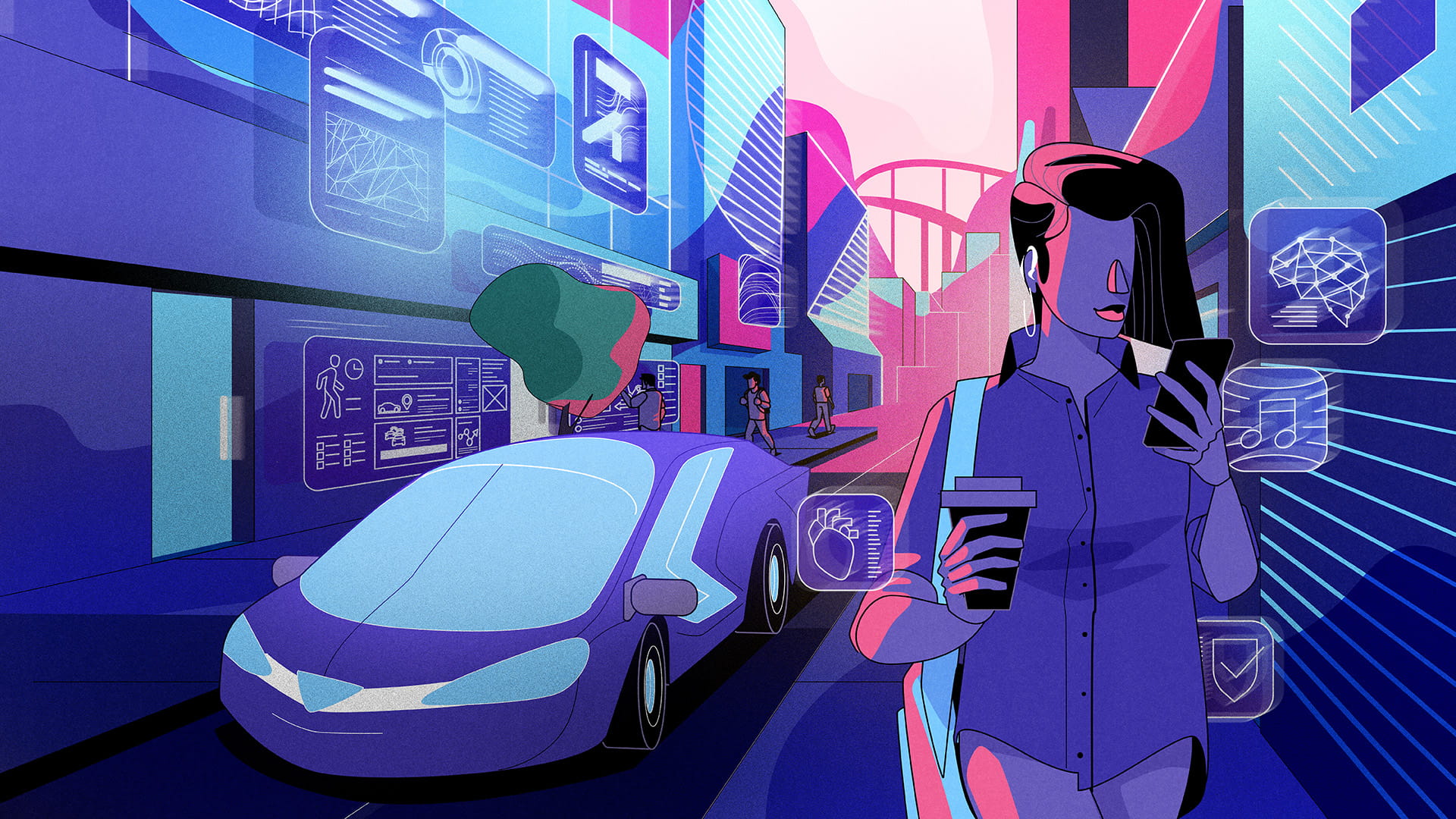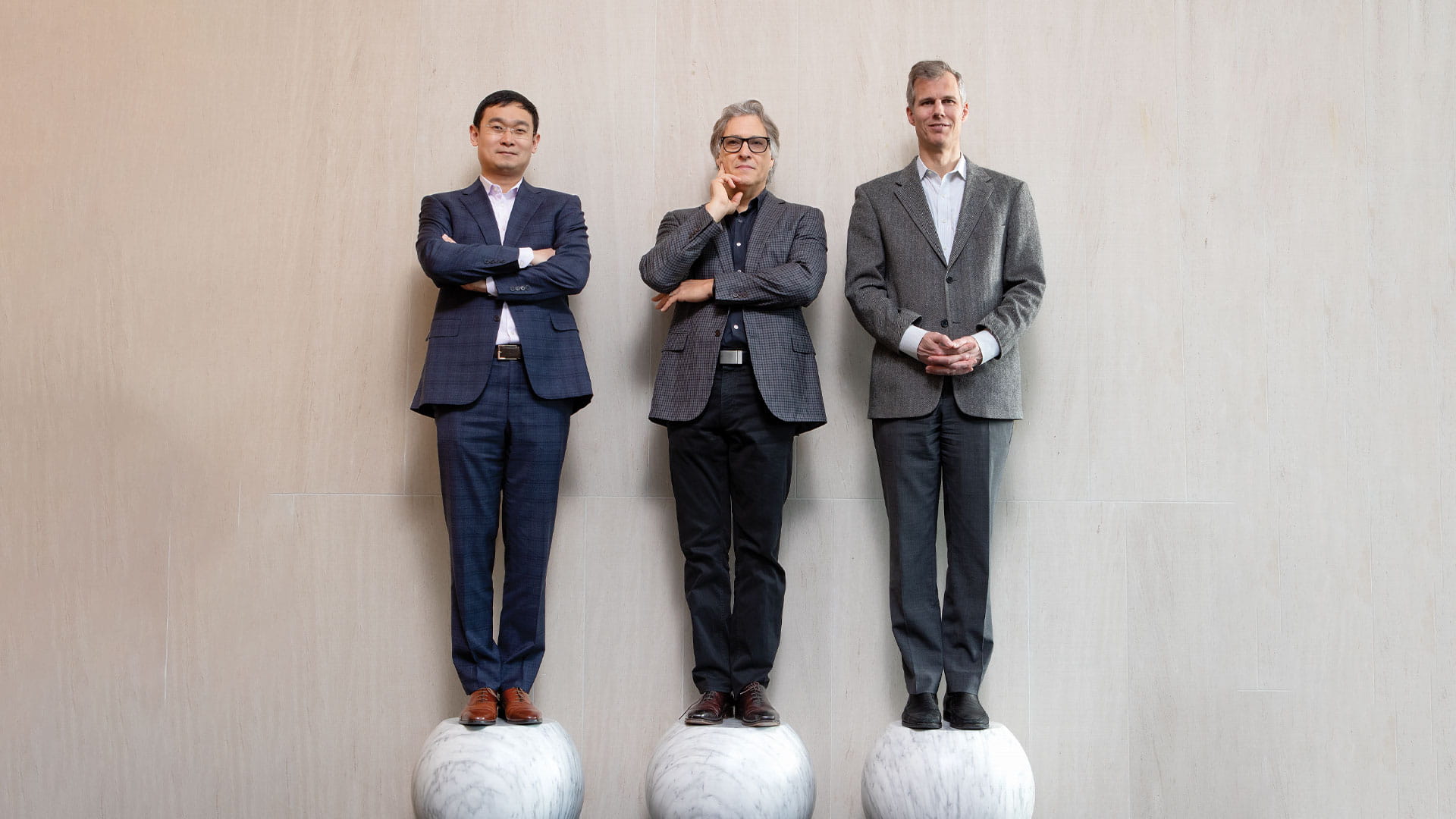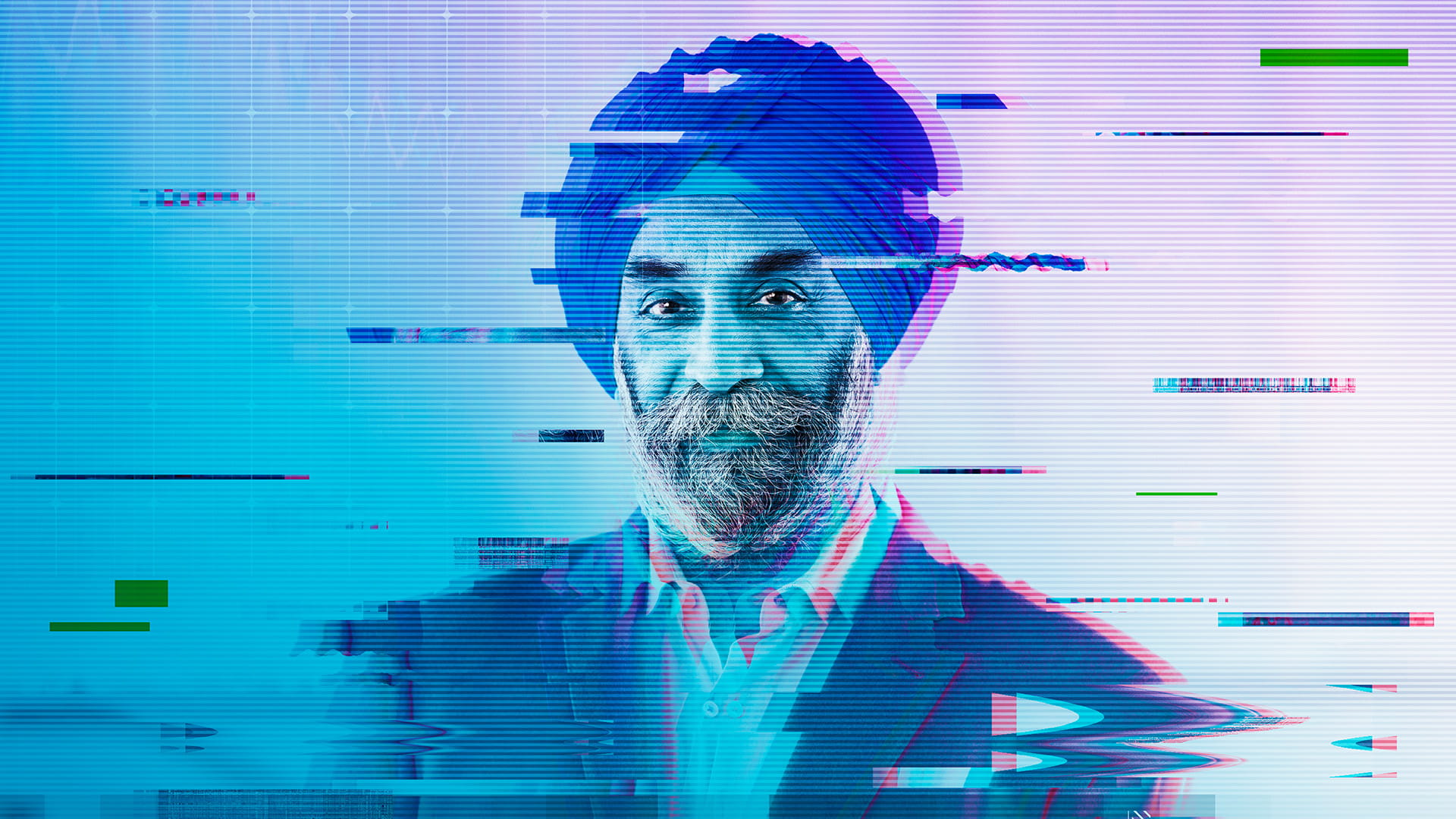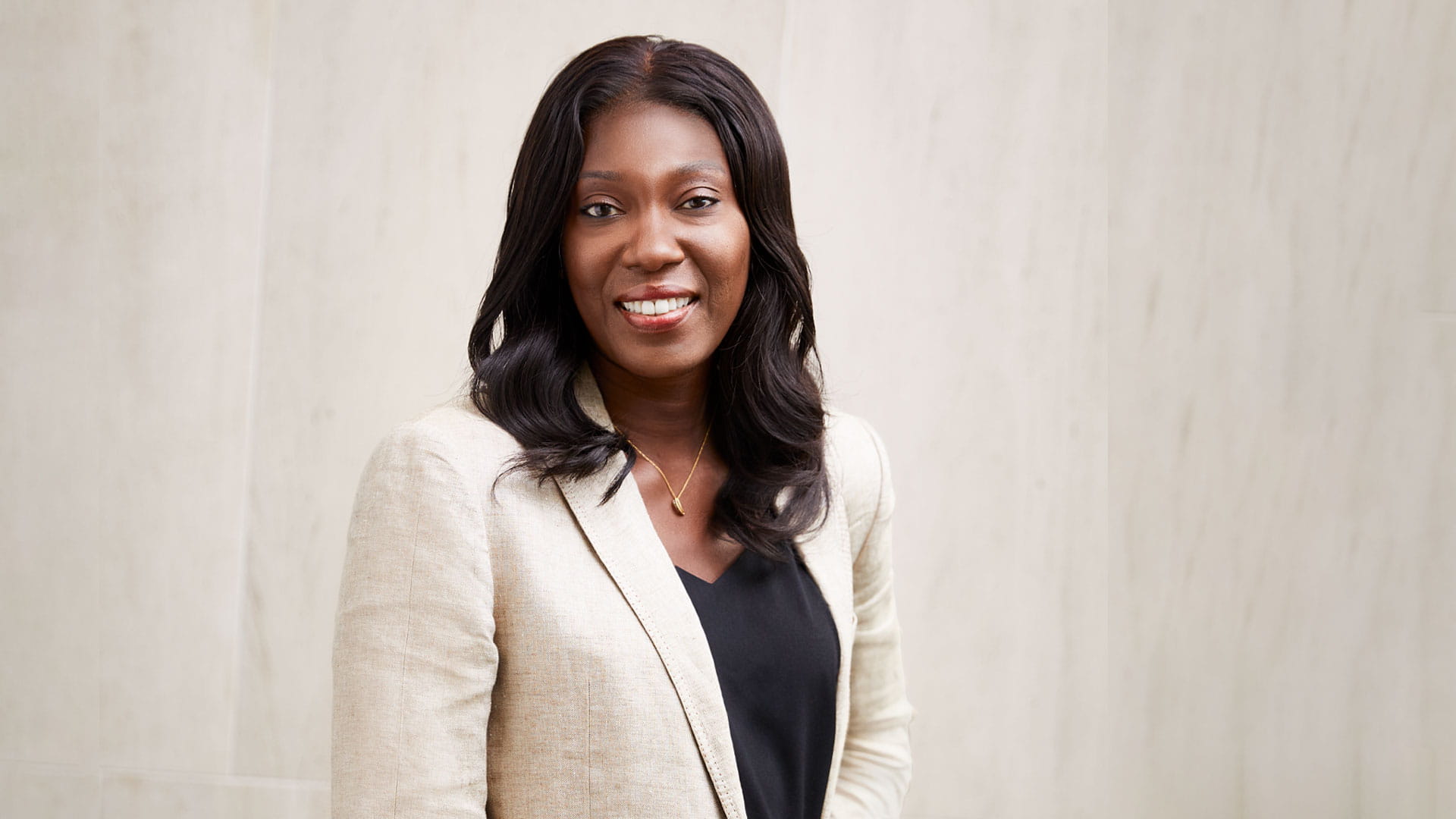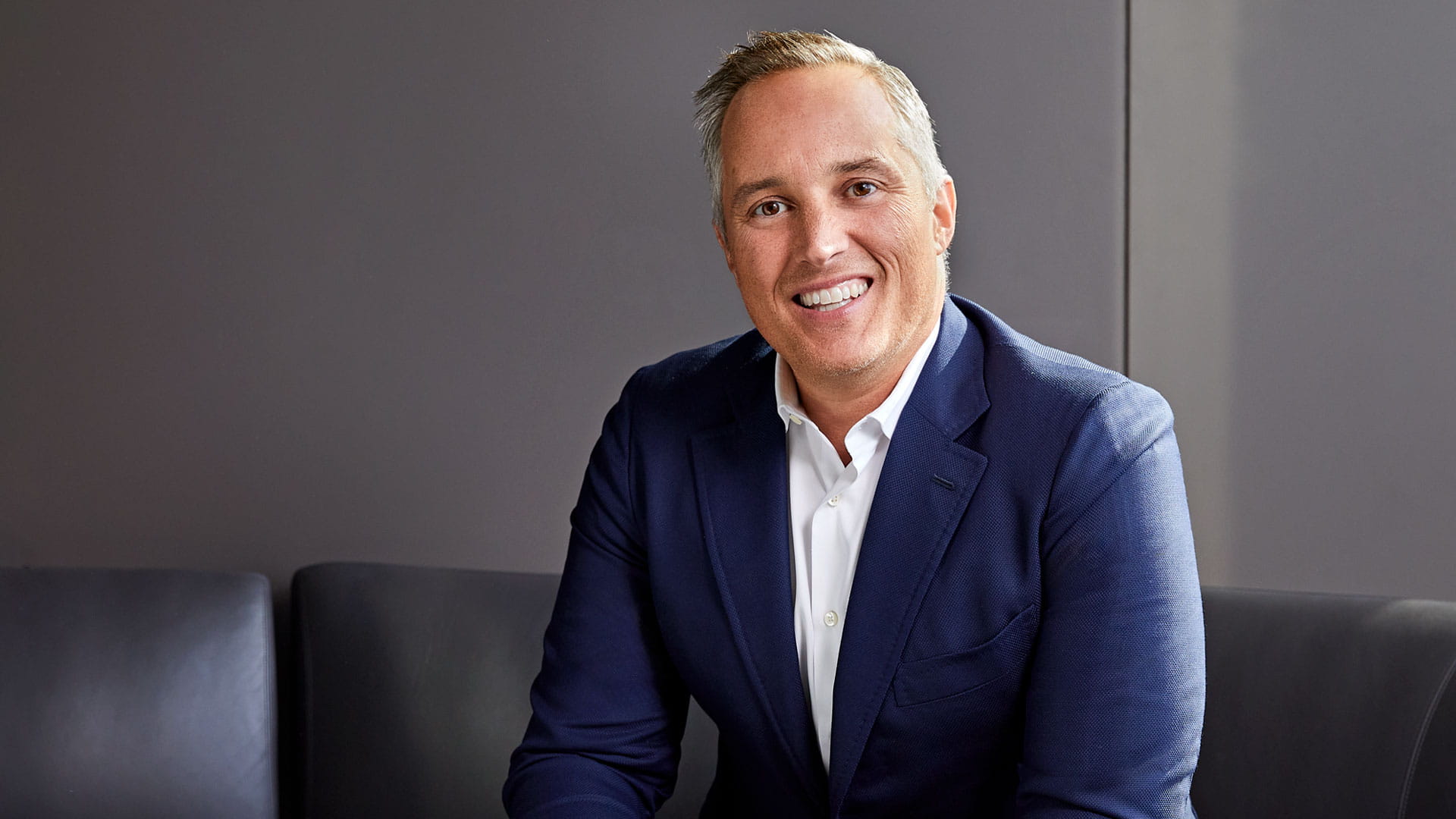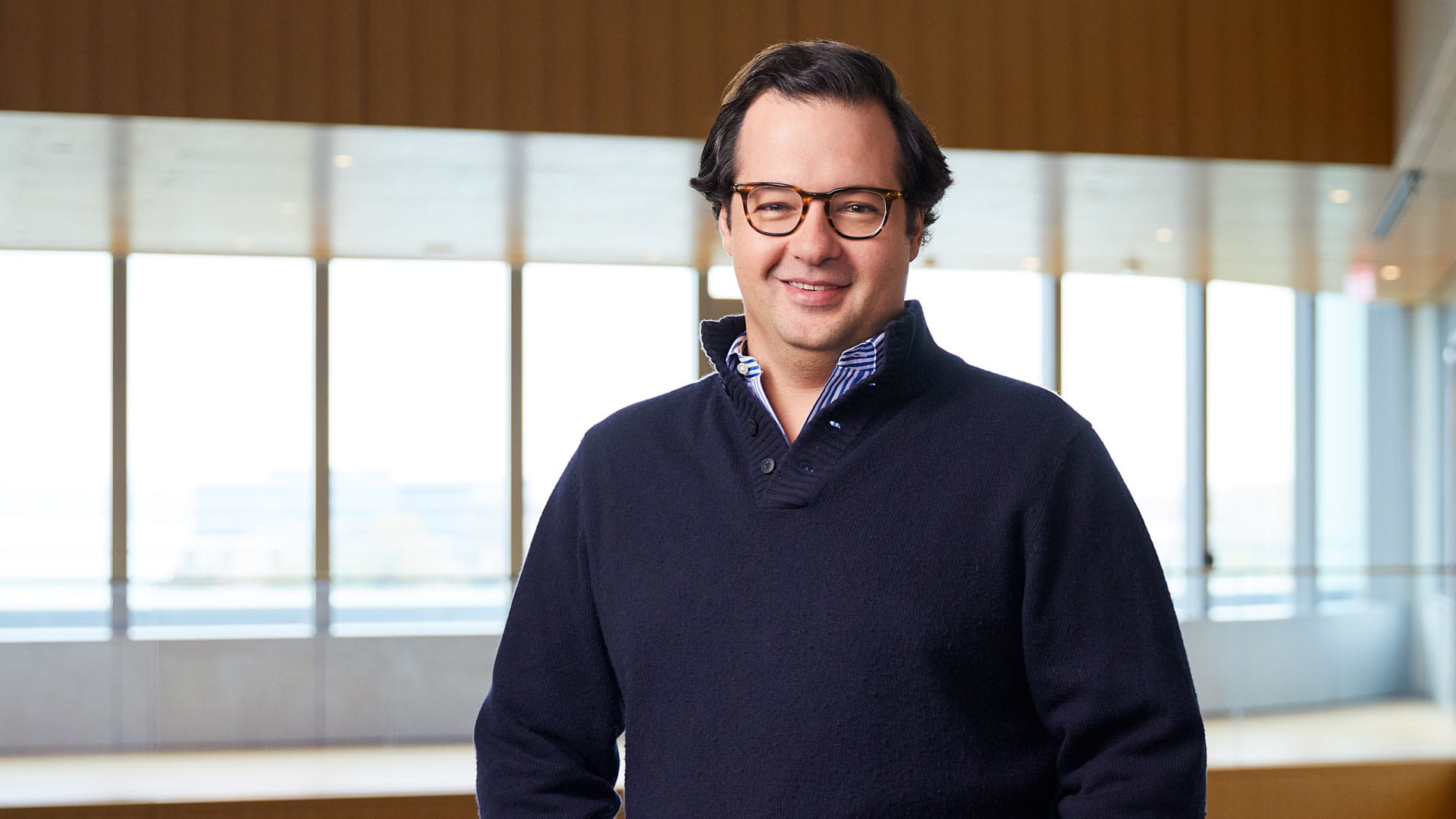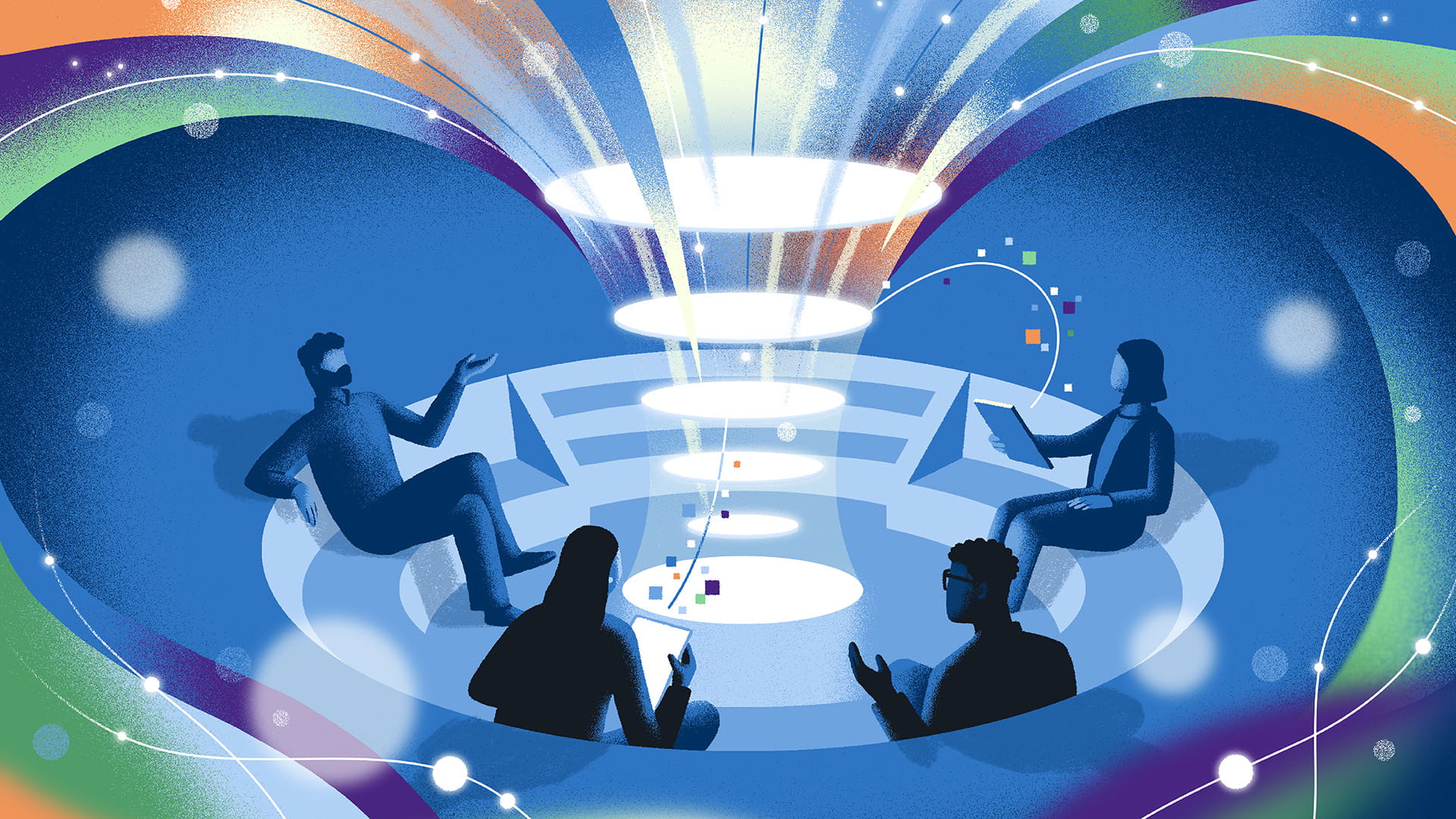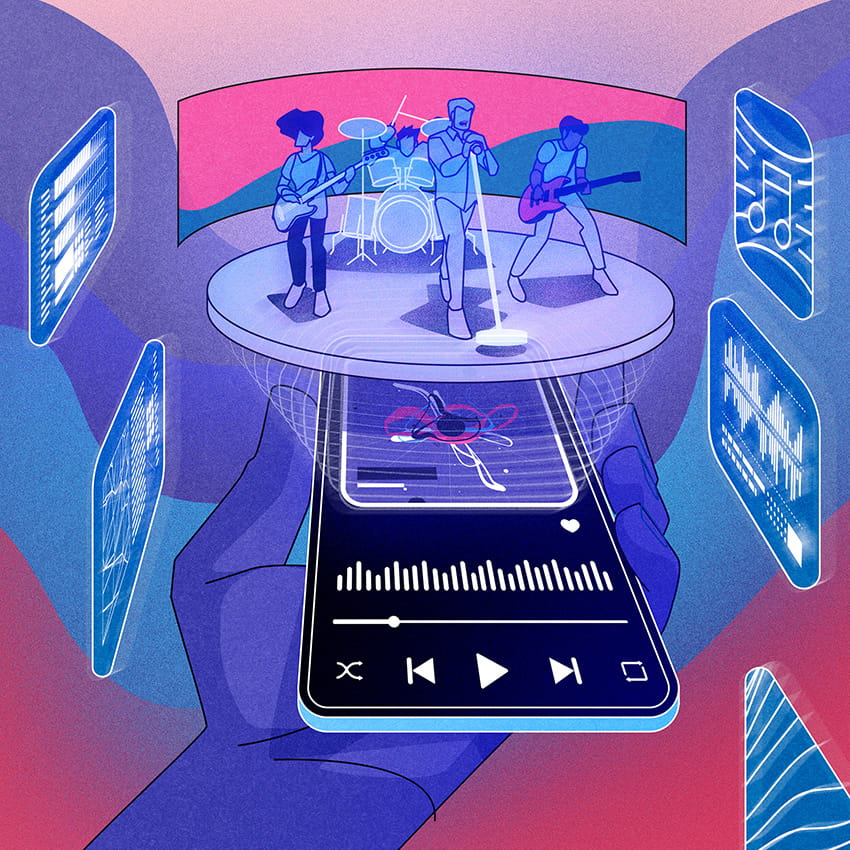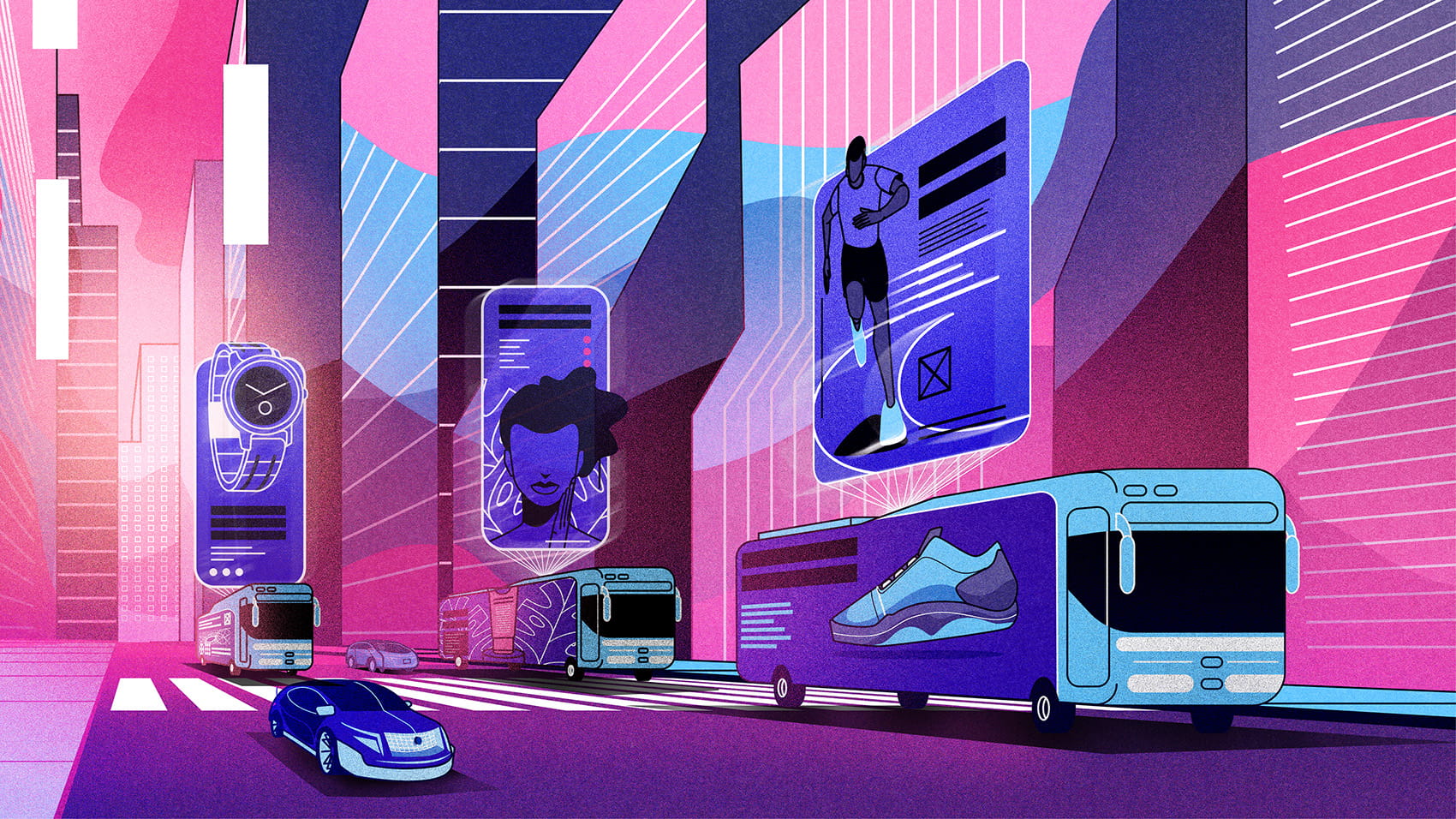It may be true that none of us can predict the future. But some likely have a clearer vision than most about what might lie ahead.
That’s why we sought out Kellogg School of Management alumni and faculty experts who are deeply immersed
in fields that are poised for transformation in the coming years. They shared with us what they thought life might look like a decade from now. Flying cars? Robot doctors? Hologram board meetings? (Thankfully, probably not on that last item.)
Still, in many ways, the world could look very different in 2033. Here’s how.
We’ll have better access to high-quality medical care
David Dranove is the Walter J. McNerney Distinguished Professor of Health Industry Management.
AI has been a boon for some areas of medicine: Studies have found that in certain cases, it can diagnose Alzheimer’s and predict the spread of bladder cancer even better than human experts.
And while there’s no question that AI will play a role in untangling knotty medical problems, David Dranove expects that some of AI’s most significant contributions in the coming decade will be embedded in tools that make it easier for patients to get run-of-the-mill medical concerns solved quickly and accurately. Artificial intelligence may also relieve doctors of some of their most onerous administrative tasks, freeing up their time to provide more patient care.
“Companies including Aetna, CVS and Optum are already making major investments in data and AI that they hope will allow doctors and nurse practitioners to provide lower-cost, higher-quality care. If successful, these investments could transform our healthcare system,” says Dranove.
AI tools will never be a substitute for humans.
Still, you’ll probably always want an empathetic human to answer questions about something like an upcoming chemotherapy regimen or to pinpoint the cause of your nagging chest pain. “AI tools will never be a substitute for humans,” Dranove says. “But they can be complements that help improve the quality of care.”
Read more about Dranove’s healthcare research with Kellogg strategy professor Craig Garthwaite in Kellogg Insight’s “Will AI replace doctors?”
We’ll reward companies that remain relentlessly human-focused
Christina Hennington ’03 MBA is an EVP and the chief growth officer at Target.
In many ways, Target is more digitally focused than ever: Its customers can discover the latest must-have item from a TikTok video, order it from a smartphone app and get it delivered directly to their car (along with their Starbucks order) with the tap of a button.
But when Christina Hennington thinks about what will keep the big-box retailer — and any business — relevant a decade from now, it’s not a specific new technology or AI integration, but an obsessive focus on the humans who work and shop there. “When we tuned in to our guests in the past, first we saw that they wanted to pick up their stuff in the parking lot, then they wanted to do it in a seamless way on their app, then they wanted to be able to pick up fresh and frozen food,” she says, ticking off the desires of the customer and the company’s subsequent innovations one by one.
That process is really about continuous listening and learning.
Customers aren’t the only people who nudge businesses forward. “Retail is a labor-intensive, human industry, and we continue to put our team members at the forefront of our strategic choices and investments,” she says. A focus on hiring and keeping great people by understanding what they need and want — higher wages, ongoing education, leave policies, an inclusive culture, and tools to help them do their jobs more effectively — isn’t just the right thing to do: It shows up in ways that improve the customer experience, too.
The benefits of that approach will remain no matter what the future brings, says Hennington.
“The last few years have taught us that the ability to anticipate the future is cloudier than ever,” she says. “But the mindset of listening, learning and then applying is very important.”
We’ll harness the world’s talent through inclusive design
Geetha Somayajula is a student in the MMM Program and a senior associate on PwC’s Experience Center team.
This past year, Geetha Somayajula played a vital role on the winning team for the Kellogg Design Challenge, the world’s largest MBA design case competition. One detail that made her contributions possible was a school-provided screen reader, an accommodation for her severe myopia.
Somayajula has plenty of company: Statistics suggest that more than 1 billion people live with some sort of disability. Unlocking their potential is good business — one analysis pegs their buying power at a cool $13 trillion — but even more importantly, it represents an enormous opportunity to tap into their talents.
Inclusive design innovations range from changes to the physical environment — such as creating curb cuts that make it easier for wheelchair users to navigate a city — to software products such as AXS Maps, a product launched with the help of Somayajula’s firm, PwC, that allows users to share accessibility ratings of businesses based on everything from counter heights to door widths. Numerous accessibility tools are packed into our computers and smartphones.
Somayajula is excited to see growing interest in inclusive design not just at PwC and from clients but also in specialized ventures. She shares examples including Mojo Vision, a company working on smart contact lenses that would allow users to increase the contrast of what they’re seeing or even zoom in on an object — features that enhance the world for people with low vision. Other companies like Science Corp are creating “bionic eyes,” image processing systems that map to users’ brains to create the experience of images that individuals couldn’t have seen otherwise. “The wearables that many are working on have the potential to help people with disabilities navigate the world on their own terms,” Somayajula says.
And while inclusive design might start with the goal of helping people with specific disabilities, Somayajula notes that efforts often find a much wider user base. “Closed captions started as a way to help those with hearing loss, but they also help language learners, people who have attention deficit disorders, and people who just want to watch a TV show while they’re making dinner,” she says. “The beauty of inclusive design is that we can design for one use case and then expand to many.”
We’ll cheer for Taylor Swift at a virtual concert — or sing alongside an up-and-coming artist — from halfway around the world
Tina Rubin ’09 MBA is the chief commercial officer at Wave, a virtual-entertainment startup.
In late 2021, a metaverse-style live virtual concert with Justin Bieber sparked massive interest. With the help of the entertainment company Wave, Bieber donned a tight-fitting motion capture suit with a head-mounted camera to perform a slew of hits for millions of fans around the world. They watched his 3D avatar dance, cheered him on by sending virtual hearts and shared their thoughts in a fast-moving chat.
While some saw the event as a novelty, Tina Rubin sees it differently. “This is the Twitch for live 3D entertainment,” she says. Live virtual experiences offer up the interactivity of video games, the ineffable spark of live performance and the thrill of being in the same space (virtually, anyway) with like-minded fans.
The evolving technology will only get more sophisticated and less expensive, says Rubin. “Right now, only the biggest artists in the world have the resources to put something like this together, but our vision is to democratize this technology. Just like Instagram filters and tools helped make everyone an amazing photographer, we want to put all of these tools in the hands of creators. We want them to put on these shows from their garage or bedroom.”
We’ll be better protected from even the most sophisticated hackers
Darin Hurd ’10 MBA is the executive vice president and chief information security officer at mortgage lender Guaranteed Rate.
Years ago, when criminals hacked into a system, it might have taken them weeks or even months to track down what they were after. This lengthy “dwell time” gave the targets of these hacks a real chance to find and oust the criminals before they’d caused much damage — or sometimes track the digital fingerprints they’d left behind.
No longer: Today, hackers find the loot they’re after in two hours, on average. And that number continues to drop.
The good news, says Darin Hurd, is that cyber-security experts are moving faster, too. A concept known as “zero trust architecture” — little more than a theory just a handful of years ago — could be a powerful tool to thwart hackers a decade from now.
Today, Hurd explains, security often functions as an all-access pass. “It’s like an office building: Maybe you put your name on a visitor’s list, but then you can go to any floor, any office, wherever you want,” he says.
In this analogy, zero trust looks very different: “We might see your government ID, and then you get a badge only to go to a specific room on a specific floor. Once you’re there, we watch what you do and how you do it,” he says.
Such an approach doesn’t just prevent most hackers from accessing a system — it also ensures that when one does slip in, the system’s owner can track the hacker’s every move and learn how to improve the system going forward. From a user’s perspective, the experience will still feel seamless.
While the work to implement such a system is significant — it requires building new systems from the ground up, not simply layering in a product — new architecture will make it easier for businesses, governments and operators of critical infrastructure to keep their information and systems safe from malicious actors. “When you can prepare yourself,” says Hurd, “you can defend yourself.”
We’ll see adoption of clean-energy solutions even among those with modest means
Kartik Wahi ’10 MBA is the co-founder and director of Claro Energy, a company focused on solar-powered irrigation.
As Americans debate the finer details of buying $50,000 electric cars, Kartik Wahi sees a different path to sustainable solutions in his home country of India, where the average annual household income hovers around $2,000.
In the coming decade, Wahi expects India to make ambitious strides in using cleaner, greener options in a range of areas, primarily because the sustainable choice has become the most affordable one in many cases.
In his own field of expertise, solar irrigation, he’s seen a sea change in people’s knowledge and interest. When he started trying to convince small farmers to consider swapping out their diesel irrigation kits for solar-powered pumps a dozen years ago, he says, they reacted “like it was a concept out of a sci-fi movie.” These days, he says, “you can’t travel more than a few hundred meters in India without seeing solar panels somewhere.”
Similarly, electric two-wheelers — scooters and motorcycles — are on the cusp of mainstream adoption. “For someone who earns $200 a month, shelling out $20 for gas in a month is significant,” Wahi says. “The need to move to electric is great.”
Over the next decade, he expects to see exponential growth. “The need for cheaper alternatives instead of the idea that ‘sustainability is good’ is the real drive for adoption of solar energy in India,” he says. “Green technologies are no longer experimental, and that’s why in the next decade, they will become omnipresent.”
We’ll see leaders use AI to become their best selves
Leigh Thompson is the J. Jay Gerber Distinguished Professor of Dispute Resolution and Organizations.
Few recent innovations have fueled more “techno- stress” in leaders’ lives than AI, says Leigh Thompson. Many are deeply anxious about its impact on their teams, their businesses and even their own livelihoods. “It’s not just that people are seeing the glass as half empty,” Thompson says of the concern that pervades many top executives’ discussions about AI’s potential impact. “It’s that the glass seems like it’s leaking water quickly.”
But Thompson predicts that a decade from now, the best leaders won’t be railing against AI: They’ll be using it to leverage their strengths and turn techno-stress into “techno-thriving.”
Thompson uses herself as an example. She was initially stunned by ChatGPT’s speed and fluency in writing, a skill she has spent decades honing for her work. But she also saw possibilities in the technology. Today, she uses it to brainstorm ideas and serve as a first-pass editor for journal articles. She believes there is significant potential in these types of human-machine partnerships.
Looking ahead, she sees opportunities for AI to play a meaningful role on teams: One of the participant displays in a future Zoom meeting might be reserved for an AI contributor that supports and enhances the good ideas and work of human team members, for example.
A decade from now, the smartest, most nimble and most creative leaders and teams will wisely integrate AI in their work, says Thompson. “AI can be an extension of yourself and your team — like bionic legs that give you the ability to run your fastest time,” she says.
See more of Thompson’s work at Kellogg Insight and on our podcast “The Insightful Leader.”
We’ll finally reach a tipping point for electric cars in the United States
Gabe Kronstadt ’04 MBA is the head of corporate financial planning and analysis at electric vehicle maker Rivian.
It’s been a long, slow slog for electric vehicles in America. While EV options have been around for years, they’ve typically had only niche appeal. Consumers had to deal with limited choices, difficult-to-find charging stations, and other hassles.
But increasingly compelling options from Rivian, Tesla, Ford and others have propelled new interest. And Gabe Kronstadt thinks we’ve arrived at a tipping point. While just 6% of all cars sold in 2022 were electric, he says that in a decade, a number closer to 80% wouldn’t be out of the question.
He ticks off the flywheel that’s turning with increasing speed: There are more models than ever before in a wide range of categories and price points, and the driving experience is typically top notch. Charging stations are popping up everywhere, government incentives are substantial and manufacturing capacity is rapidly growing.
Plus, increasing consumer concern about gas prices and climate change is leading even the most skeptical to take a second look at the options. “It feels inevitable that we’re going to see massive growth and adoption,” Kronstadt says.
We’ll be DIYing our lives — and maybe we’ll even like it
Sach Chitnis ’04 MBA is a co-founder and partner of Jump Capital, an early-stage venture capital firm focused on tech.
In the past, if you wanted to deposit money in a savings account, you might work with a bank teller. Make an investment? You might call up a wealth manager to discuss the purchase of stocks and bonds.
These days, you can deposit a check by taking a snapshot on your phone’s camera, and you can invest with a robo-adviser. We’ve learned to check out from a grocery store and check in to a hotel without a single human interaction.
You might consider this new DIY world empowering or exhausting (or maybe a little of both), but either way, says Sach Chitnis, there’s little doubt that these trends will accelerate over the coming decade. “Companies are always looking for efficiencies: workflow automation and tools that allow them to do more with less,” he says. “And the advancement of AI into our daily lives is going to accelerate that movement even more.”
Areas that are likely ripe for enterprise innovation include some areas of accounting, legal services and research analysis. Innovative companies will offer speedy, less costly services — in exchange for a little more effort from customers.
“I can already control my home alarm system, lighting and door locks, and even my kids’ phones,” Chitnis says. “We’re moving to a more self-serve world, and everyone will increasingly feel more empowered and in control.”
We’ll see a big comeback in in-person collaboration
Hyejin Youn is an associate professor of management and organizations.
One lesson of the pandemic seemed to be that for many white-collar jobs, in-person collaboration was strictly optional. Employers tried to call employees back again and again (and again), only to be met with fierce employee resistance. Companies ditched their downtown skyscrapers, and workers decamped to their homes. Zoom was in; in person was decidedly out.
But Hyejin Youn has a counterintuitive bet. She believes the world will ultimately continue to concentrate in a few urban areas. Her argument? It works.
Youn’s research has found that in large, dense cities, people bumping into each other both literally and figuratively drives an outsize change in many ways. “Interactions of human beings are the fuel of innovation and prosperity,” says Youn. “It’s true that there are many different ways to communicate, and technology has flattened our world. But we have found that at the frontiers of research and innovative activities, those who can afford to be co-located — who can come together and work together — are more innovative.”
While assembling minds in one room has its price, the dividends in innovation are worth the investment. Physical proximity still matters, and the future may not be as virtual as the present suggests. Those who can afford to gather face-to-face will likely lead in innovation, leaving others in their digital wake.
Read more of Youn’s research about cities and innovation at Kellogg Insight.
We will create economic growth through inclusive and sustainable transformations
Phillia Wibowo ’03 MBA is a partner at McKinsey & Company. Based in Indonesia, she leads the company’s People & Organizational Performance Practice in Southeast Asia.
In some years, says Phillia Wibowo, nothing seems to happen. In other years, centuries seem to pass. A decade from now, we may see the recent past as a “centuries passing” inflection point.
For example, hybrid work, once relatively rare, looks to be the new normal. “COVID pushed us to do things we didn’t think were possible, and now, those habits are here to stay,” she says.
At the same time, the push for companies to focus on external impacts such as climate change, not just profits, has increased dramatically in recent years as a younger generation of leaders has taken the helm. McKinsey analysis has found that automation and AI improvements could take over nearly a third of the tasks that many of us do in our jobs each day — and could have some type of impact on more than half of them. The upshot? Nearly all of us may need to build new skills. “Disruptions are getting more frequent, and they are happening at scale,” Wibowo says.
COVID pushed us to do things we didn't think were possible, and now, those habits are here to stay.
She adds that the best leaders will help us see this as a moment that we can move into with a sense of purpose and meaning: Geography is no impediment to accessing talent or capital, sustain-ability initiatives will bring about new jobs and opportunities, and technology will make us ever more productive. “We’re looking at a world that can still grow — and can grow in ways that are both more inclusive and more sustainable,” Wibowo says.
